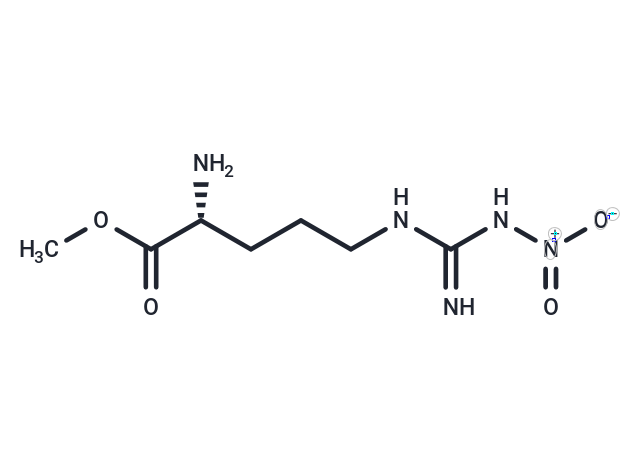Shopping Cart
Remove All Your shopping cart is currently empty
Your shopping cart is currently empty
N(G)-Nitro-D-arginine methyl ester (D-NAME) is the less active enantiomer of the nitric oxide (NO) synthase inhibitor N(G)-nitro-L-arginine methyl ester . D-NAME was initially thought to be inactive and was often used as a negative control for L-NAME. Later studies showed that D-NAME (40 mg/kg/day in rats) can have similar but less pronounced effects as L-NAME (40 mg/kg/day in rats) in the cardiovascular system, particularly at long-term timepoints. D-NAME (3-10 µg/mouse) had no effect on nociception in mice assessed using the tail flick test.

| Pack Size | Price | USA Warehouse | Global Warehouse | Quantity |
|---|---|---|---|---|
| 250 mg | $113 | 35 days | 35 days | |
| 500 mg | $213 | 35 days | 35 days | |
| 1 g | $388 | 35 days | 35 days | |
| 5 g | $1,690 | 35 days | 35 days |
| Description | N(G)-Nitro-D-arginine methyl ester (D-NAME) is the less active enantiomer of the nitric oxide (NO) synthase inhibitor N(G)-nitro-L-arginine methyl ester . D-NAME was initially thought to be inactive and was often used as a negative control for L-NAME. Later studies showed that D-NAME (40 mg/kg/day in rats) can have similar but less pronounced effects as L-NAME (40 mg/kg/day in rats) in the cardiovascular system, particularly at long-term timepoints. D-NAME (3-10 µg/mouse) had no effect on nociception in mice assessed using the tail flick test. |
| Molecular Weight | 269.69 |
| Formula | C7H16ClN5O4 |
| Cas No. | 50912-92-0 |
| Smiles | COC(=O)[C@H](N)CCCNC(=N)N[N+]([O-])=O |
| Storage | Powder: -20°C for 3 years | In solvent: -80°C for 1 year | Shipping with blue ice/Shipping at ambient temperature. | |||||||||||||||||||||||||||||||||||
| Solubility Information | PBS (pH 7.2): 10 mg/mL (37.08 mM), Sonication is recommended. DMF: 20 mg/mL (74.16 mM), Sonication is recommended. DMSO: 20 mg/mL (74.16 mM), Sonication is recommended. | |||||||||||||||||||||||||||||||||||
Solution Preparation Table | ||||||||||||||||||||||||||||||||||||
PBS (pH 7.2)/DMF/DMSO
DMF/DMSO
| ||||||||||||||||||||||||||||||||||||
| Size | Quantity | Unit Price | Amount | Operation |
|---|

Copyright © 2015-2026 TargetMol Chemicals Inc. All Rights Reserved.